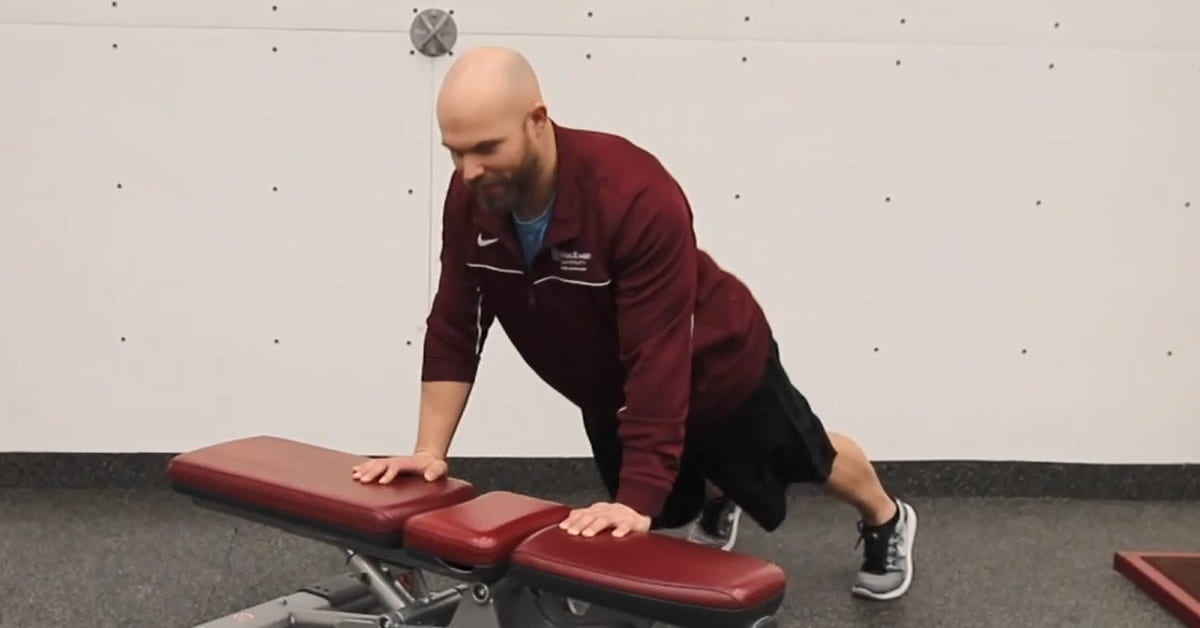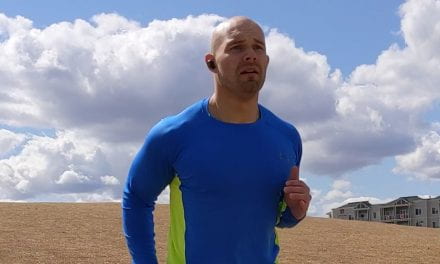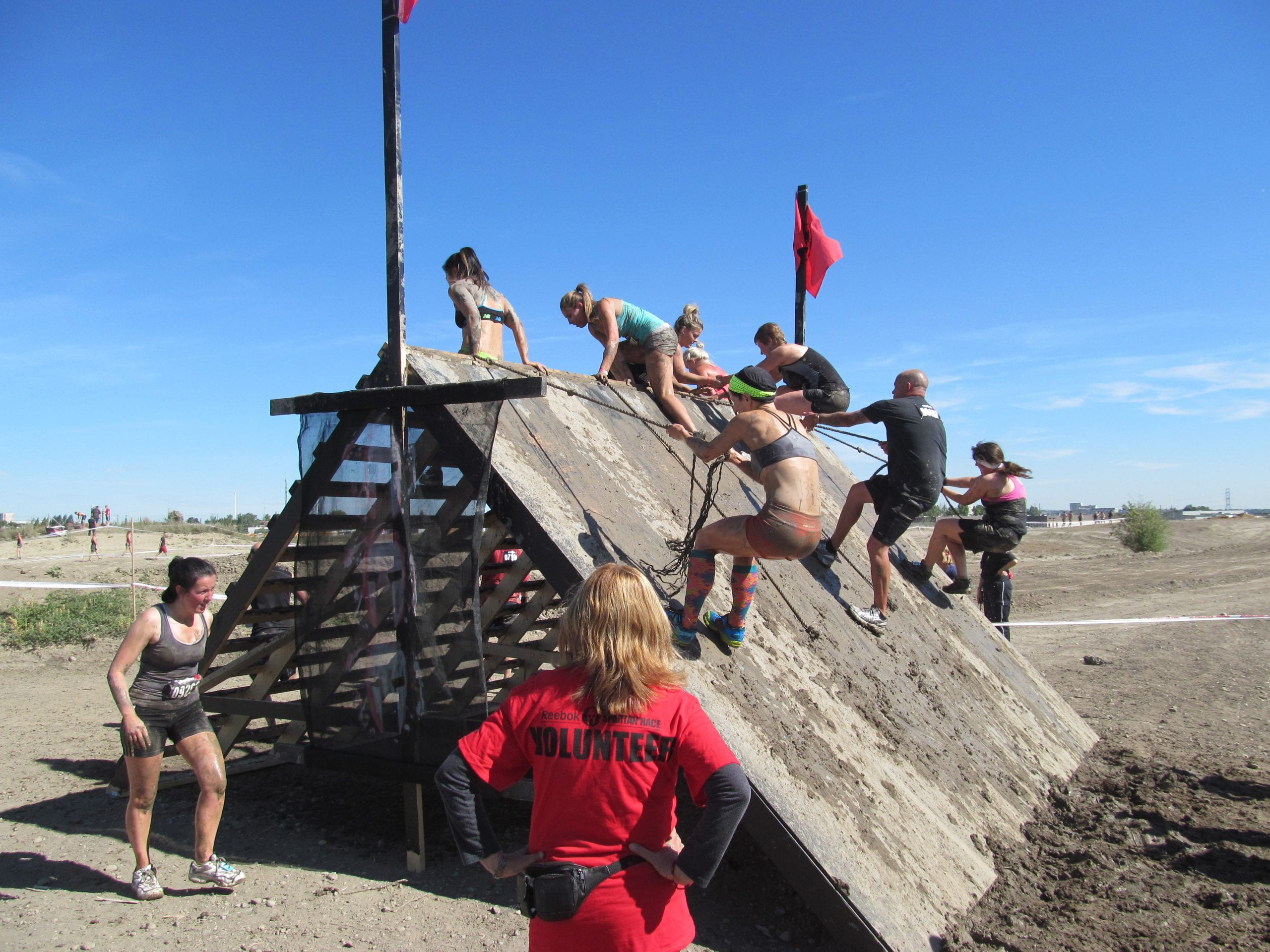The push up is a fundamental exercise that everyone should know how to do properly. It can be done anywhere at any time and can be fine-tuned to any level of skill and strength, with small modifications. The traditional push up is done with your chest on the ground with your hands just outside shoulder width and your feet placed shoulder-width apart. As you push your body up from the ground, you will need to keep your core engaged, as if you were to do a plank and keep your elbows pointed at about a 40-60 degree angle out from your torso. If you were to think of your body from above your head is the tip of an arrow and your arms are the edges of the arrowhead. When done correctly the push up can help you build a lot of upper body and core strength, while encouraging proper stabilization of the shoulder joint and upper back muscles.
Objective
- The objective when doing a push up is to maintain control of your entire body from the point of contact at the feet and/or knees all the way up to your shoulder. The body should not significantly deviate from the locked-in position as you move up and down in the push up.
Joints Targeted
- Primarily focuses on the shoulder joints through activation and stabilization of the chest, shoulders, triceps, and upper back muscles.
Muscle Groups Targeted
- Agonists
-
- Pectoralis Major
- Triceps brachii
- Deltoids
- Stabilizing muscles
-
- Pectoralis Minor
- Latissimus dorsi
- Teres minor
- Teres major
- Subscapularis
- Rectus abdominus
- Internal/external obliques
- Transverse Abdominius
Starting Position
Elevated Push ups (Modified to full)
- Kneeling in front of a chair place your hands on the chair just outside of your shoulders. Bring your chest down to the chair lip the chair should make contact with the lower part of your breast bone where your rib cage comes together, adjust your knees towards or away from the chair until you have made a straight line between your shoulders, hips and knees.
- If you find the kneeling version too easy simply extend your legs and move your feet slightly apart to shoulder width.
Push up (Modified to full)
- Start on the ground set your hands just outside and below your shoulders have your elbows pointed back 40-60 degrees. Your knees are going to be your pivot point so feel free to bring your feet off the ground if this is more comfortable. Push the ground away keep your elbows pointed in the same direction as your started until you get to full extension.
- Simply extend your legs keeping all other positions the same to progress into a full push up. Make sure you are able to keep your core engaged as you move through the push up and that your elbows do not flare excessively.
Movement
- Push your body away from the chair keeping your elbows tucked in between 40-60 degrees away from your body and keeping your core engaged until you are fully extended at the elbow.
- While lowering yourself down think of pulling your body into the push up to stabilize your shoulders as you come back down to your bottom position.
- Allow your chest to come to about 1 inch above the ground or chair
Recommended sets and repetitions
- For push ups start with 2-3 sets of 10-25 reps
- Progress from 2 sets to 3 sets when you can achieve at least 20 reps on both sets with 2 minutes or less of a break in between sets
- Once you have progressed to 3 sets of 20-25 reps with 2 minutes or less of a break in between, progress to a more challenging option.
Progressions
- Option 1 – manipulate tempo of lift. To increase difficulty doing push ups slow down the tempo of each rep
- Easy = 2 sec eccentric (relaxation of muscle or downward motion) – 1 sec pause (at the bottom of the movement) – 2 sec concentric (contraction of muscle or upward motion)
- Harder = 5 sec eccentric – 3 sec pause – 5 sec concentric
- Option 2 – Hybrid method you can do the UP portion of the push up modified off the knees then do the DOWN potion as a full
- This is very effective when you are easily achieving goals from the knees but struggle when moving into the full position
- Option 3 – Increase the challenge progress to the next most challenging position, or if you are on an elevated surface decrease the height if you are unable to move to the floor position
- Once into a full push up position:
- Increase the height of your feet
- Elevate your hands – this will increase the range of motion through the shoulder
- Add resistance such as exercise bands, weights or even a partner if your feeling really adventurous
- Once into a full push up position:
- Option 4 – For those really needing a challenge and may be limited you can use single handed push ups. These are incredibly challenging and will likely humble even the strongest of individuals.
by Kyle Babiuk
Kyle is a Bachelor of Kinesiology Graduate and is certified with the Canadian Society for Exercise Physiologists. He specializes in movement analysis, chronic disease management through exercise and strength programming. He’s worked with athletes, individuals with chronic diseases, along with many other individuals trying to achieve their health and fitness goals.




